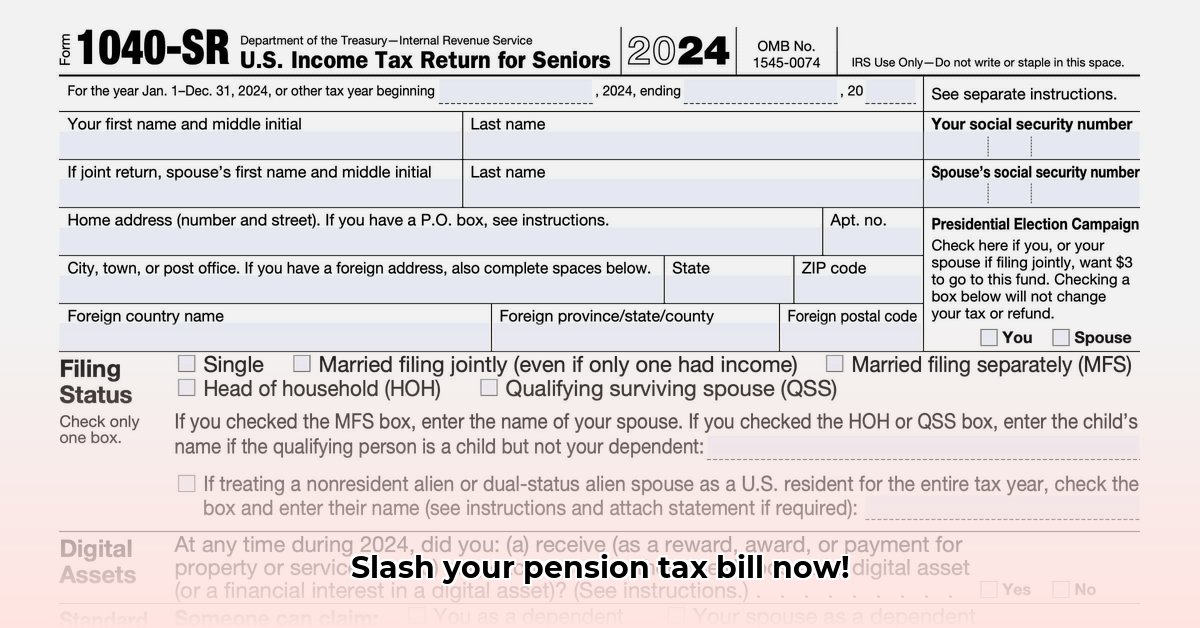
Retirement planning can be complex, especially when it comes to understanding the tax implications of your pension and annuity income. IRS Publication 575 provides comprehensive guidance, but navigating its details can be challenging. This guide simplifies the process, empowering you to minimize your tax burden and maximize your retirement enjoyment.
Understanding Your Retirement Income: A Simplified Guide to Publication 575
This guide serves as a user-friendly interpretation of IRS Publication 575, focusing on practical strategies and actionable steps. We'll break down complex concepts into easily digestible chunks, helping you understand your tax obligations and make informed decisions. Remember, while this guide offers valuable insights, consulting a qualified financial advisor is always recommended for personalized advice.
Did you know that the way you receive your retirement payments significantly impacts your tax liability? This seemingly small detail can make a big difference in your bottom line. Let's delve into the specifics.
Decoding Payment Types: Periodic vs. Non-Periodic
The first crucial distinction lies in the type of payments you receive. Publication 575 meticulously outlines the tax implications of both periodic (regular, such as monthly payments) and non-periodic (lump-sum) distributions. Understanding this difference is paramount to accurately calculating your taxable income.
Non-periodic payments, for example, often lead to a different tax treatment than regular, smaller payments. This difference can be substantial, especially when factoring in your overall income bracket and other tax obligations.
Qualified vs. Non-Qualified Plans: A Critical Distinction
Another key aspect to grasp is the difference between qualified and non-qualified retirement plans. This distinction significantly affects how your retirement income is taxed.
Qualified plans (like traditional 401(k)s and pensions) generally offer more favorable tax treatment than non-qualified plans (like profit-sharing plans). This is a critical factor you need to consider when evaluating your retirement income tax situation.
A staggering 70% of retirees underestimate their tax liability, according to a recent study by the National Endowment for Financial Education (NEFE). Don't let this statistic apply to you. Let's move on to actionable steps.
A Step-by-Step Guide to Managing Your Retirement Taxes
Follow these five steps to better understand and manage your taxes on pension and annuity income:
Identify Your Plan Type: Determine if your retirement plan is qualified or non-qualified. This single step forms the foundation for all subsequent tax calculations.
Understand Your Payment Schedule: Are your payments periodic (regular) or non-periodic (lump sum)? This significantly impacts the tax calculation method.
Calculate Your Taxable Amount: Publication 575 provides the necessary formulas. While this can be complex, remember that tax software and professional assistance can simplify the process.
Accurate Reporting: Ensure your tax return accurately reflects your pension and annuity income, along with all other sources of income. Inaccuracy can result in penalties and audits.
Long-Term Financial Planning: Consult a financial advisor to create a comprehensive, long-term strategy that considers your specific situation and anticipates future tax liabilities. Proactive planning is essential for long-term financial security.
"Failing to plan is planning to fail," as Benjamin Franklin famously said. This is especially true when it comes to retirement tax planning. Effective strategies can provide significant financial relief.
Key Strategies for Minimizing Your Tax Burden
Publication 575 highlights several tax-saving strategies, including IRA rollovers. These can offer increased flexibility in managing your retirement funds and potentially minimize your current tax liability.
How can you use these strategies to effectively reduce your tax burden? Let's explore some options.
Diversification and Tax-Advantaged Investments
Expanding your investment portfolio beyond your pension and annuity can help balance your overall tax liability. Consider exploring tax-advantaged investment options, such as Roth IRAs, to further optimize your retirement savings.
Deductions and Credits
Review all available tax deductions and credits related to retirement contributions or healthcare expenses. These often-overlooked opportunities can make a significant difference in reducing your overall tax bill.
Strategic Withdrawal Planning
Properly timing your withdrawals can dramatically affect your tax liability. Consulting with a financial specialist will help optimize your withdrawal strategy, minimizing your tax burden over the long term.
"A well-structured retirement plan, including tax optimization strategies, can make a world of difference," advises Dr. Amelia Hernandez, CFP®, Professor of Financial Planning at the University of California, Berkeley.
Addressing Potential Challenges
Publication 575 is an invaluable resource but isn't a replacement for personalized professional advice. Here's a risk assessment matrix to help identify potential challenges:
| Risk Category | Risk Description | Mitigation Strategy |
|---|---|---|
| Incorrect Reporting | Mistakes on your tax return could lead to penalties or audits. | Carefully review Publication 575; consider professional help. |
| Early Withdrawal Penalties | Taking money out of your retirement plan early often involves fees. | Understand your plan's rules and withdrawal options. |
| Unoptimized Tax Planning | Failing to use available tax-saving strategies. | Consult a qualified financial advisor or tax professional. |
Conclusion: Securing a Comfortable Retirement
Understanding and effectively managing the tax implications of your pension and annuity income is crucial for a secure and comfortable retirement. This guide, in conjunction with IRS Publication 575 and professional financial advice, will empower you to navigate the complexities of retirement taxation and create a financial plan that works for you. Remember, proactive planning is key to a worry-free retirement.